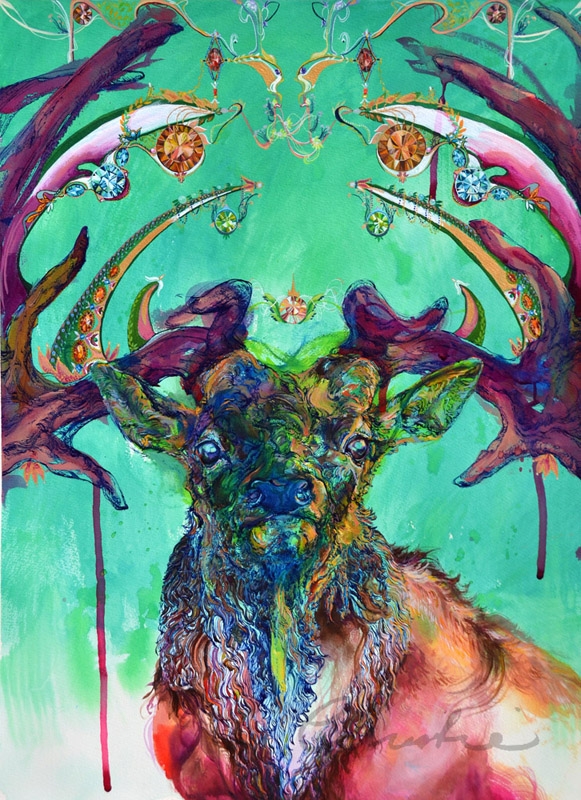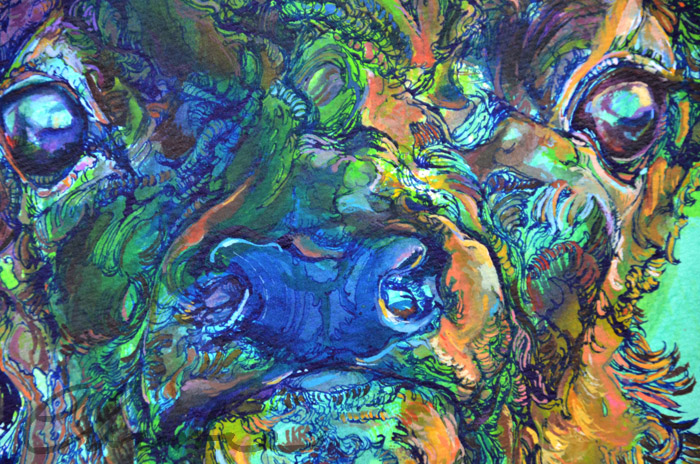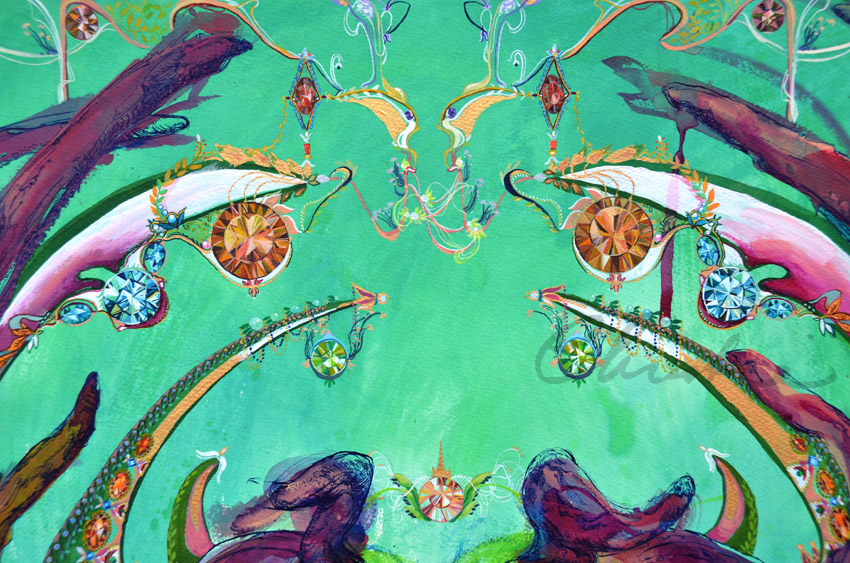February 19th, 2013 § § permalink
The eggs she lays are white, like her host’s.
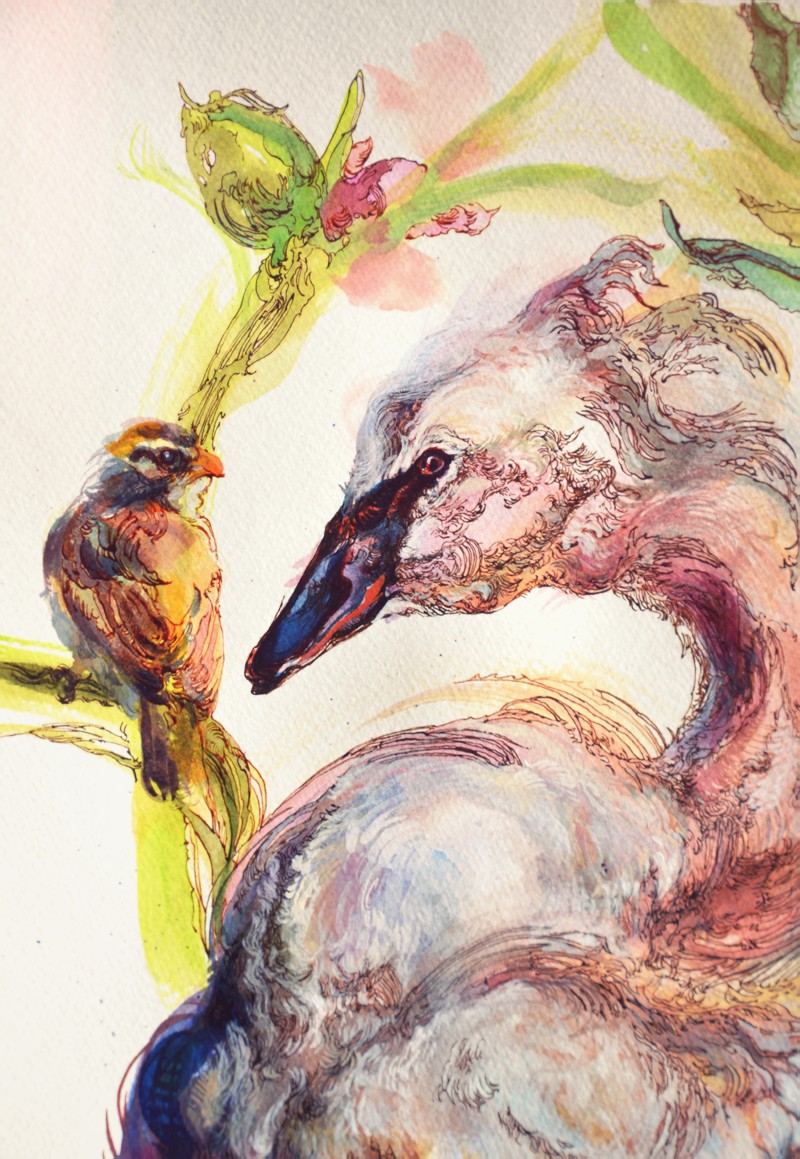
The whydah lays her two to four eggs in a pytilia’s nest. When her chicks hatch, the male learns to sing his caretaker’s song, while the female learns to recognise it. Their parasitic relationship and recent speciation is perpetuated with the perfect imitation of a melody.
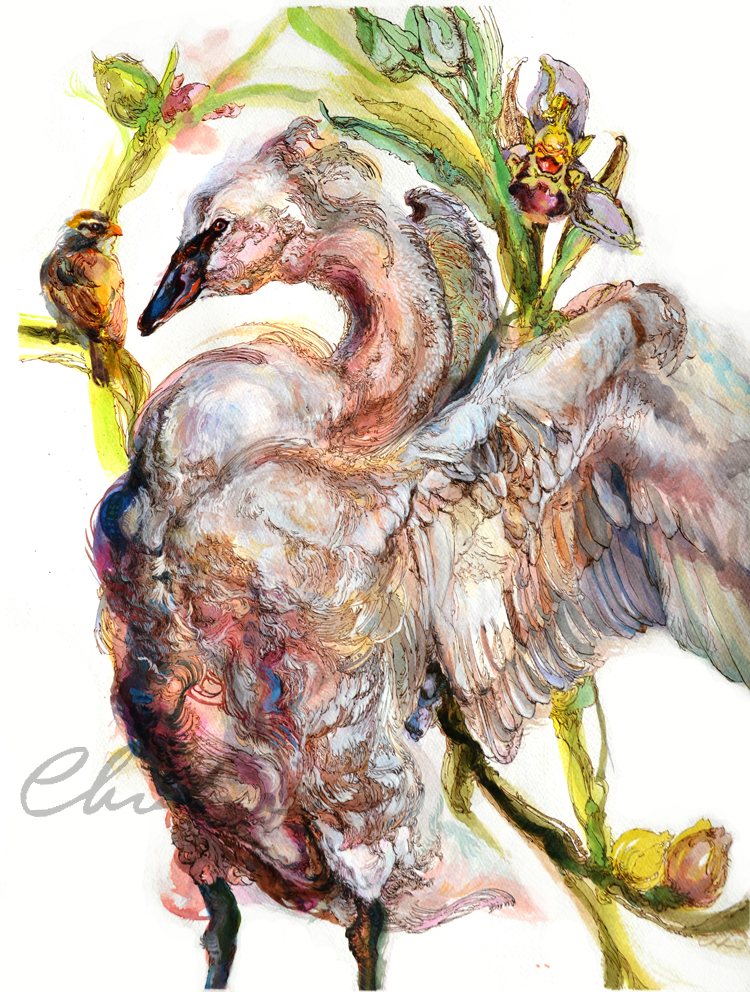
Recently I’ve been thinking about how elegant the balance between altruistic and selfish animals is. A single parasite, having more to lose, can devastate an idyllic society of forgiving animals. The selfish multiply and consume the resources. They eventually run out of animals to take advantage of, however, and this new majority quickly declines. An increase of kinder animals occurs, this time more wary and sharp.
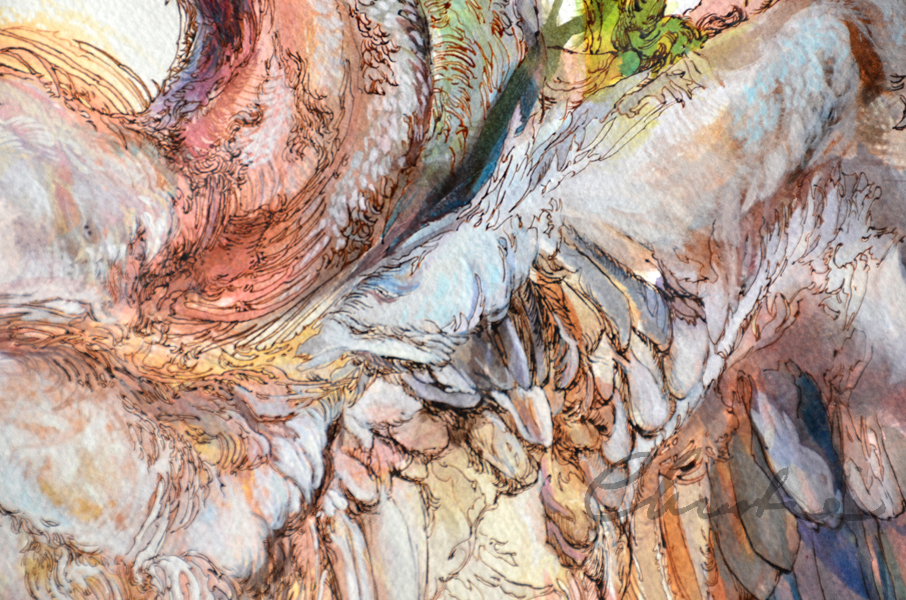
Meanwhile, the remaining parasites return with relentless ambition. Part of it is tragic, because they are born out of a genetic code that pressures selfish behaviour, facing extinction if they deny their tradition.
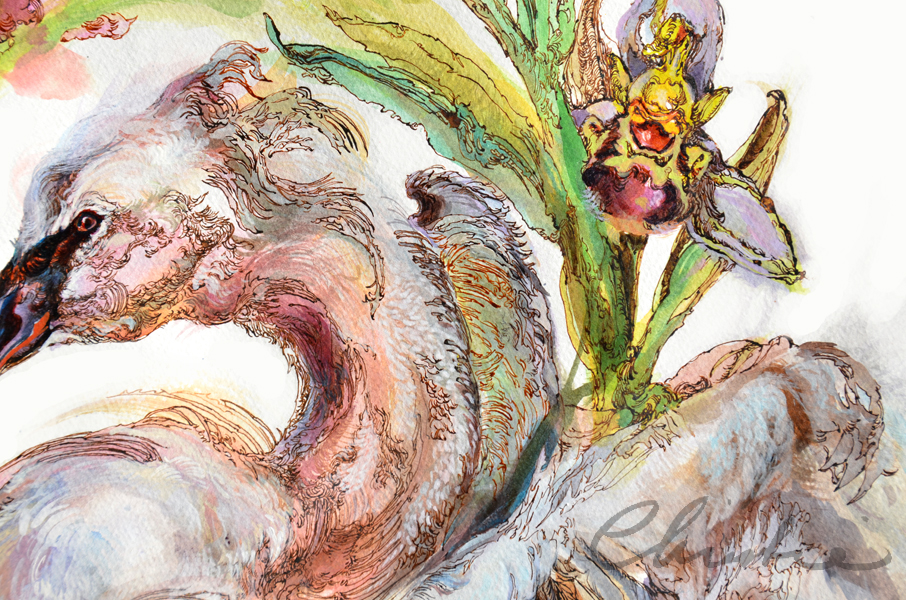
From the Deception series!
-Christie
February 18th, 2013 § § permalink
The cuckoo, the bee orchid and the white swan
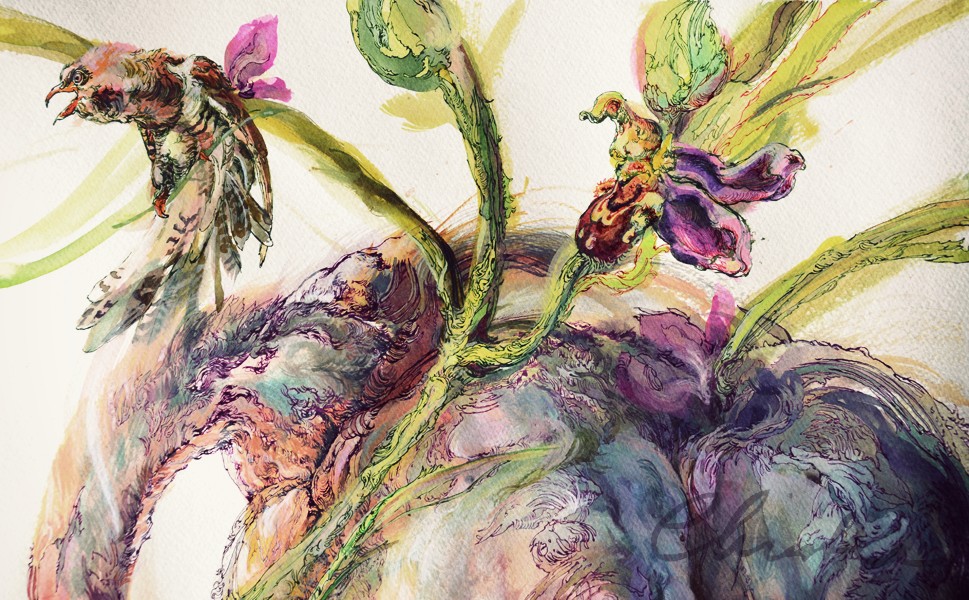
Part of the Deception series <- click to read description!


-Christie
October 22nd, 2012 § § permalink
This past summer, I was commissioned to design a tattoo of the hedgehog from the beautiful Soviet/Russian animated film by Yurij Norshteyn. It is about a hedgehog going to visit his friend, the bear cub. They like to drink tea and count the stars, and today he is bringing bear some rasberry jam. I have attached a youtube link of the 1975 animation, it is really special!
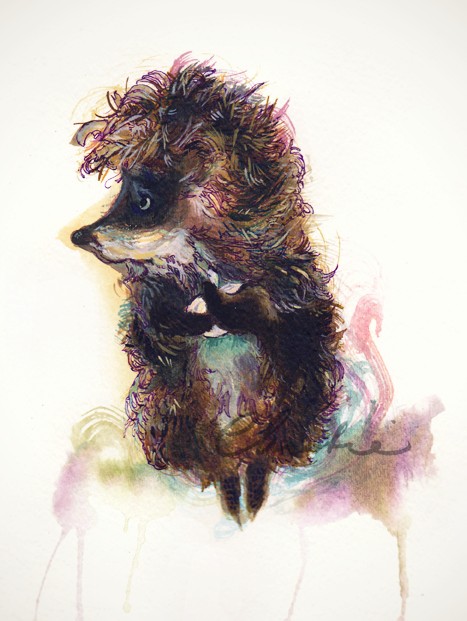
http://www.youtube.com/watch?v=xhlW5pYv_lg
-Christie
June 22nd, 2012 § § permalink
Roots dig into Odette’s body
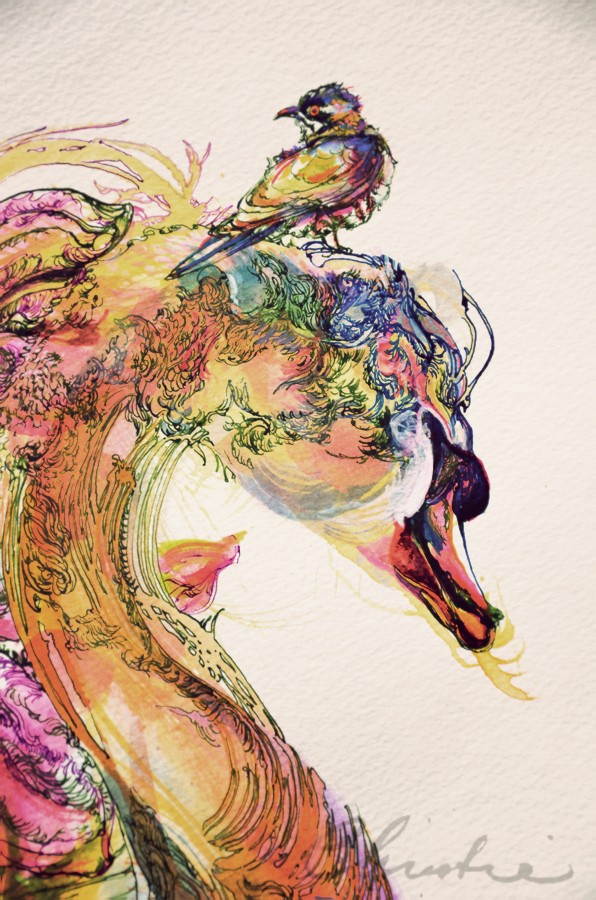
Odile is blooming from the beauty of Odette as the orchid imitates the figure of a female bee.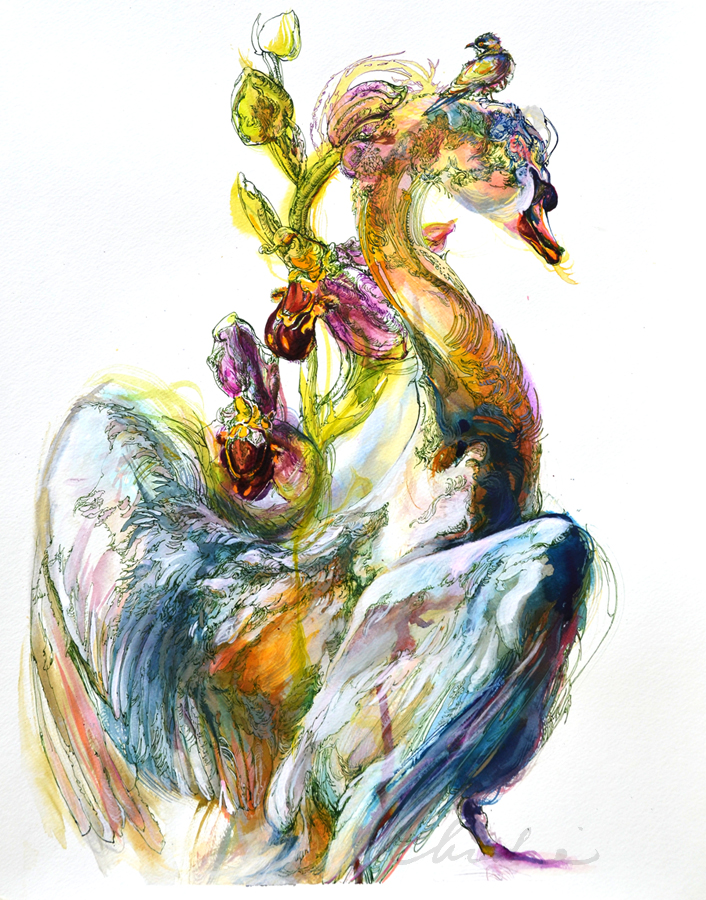
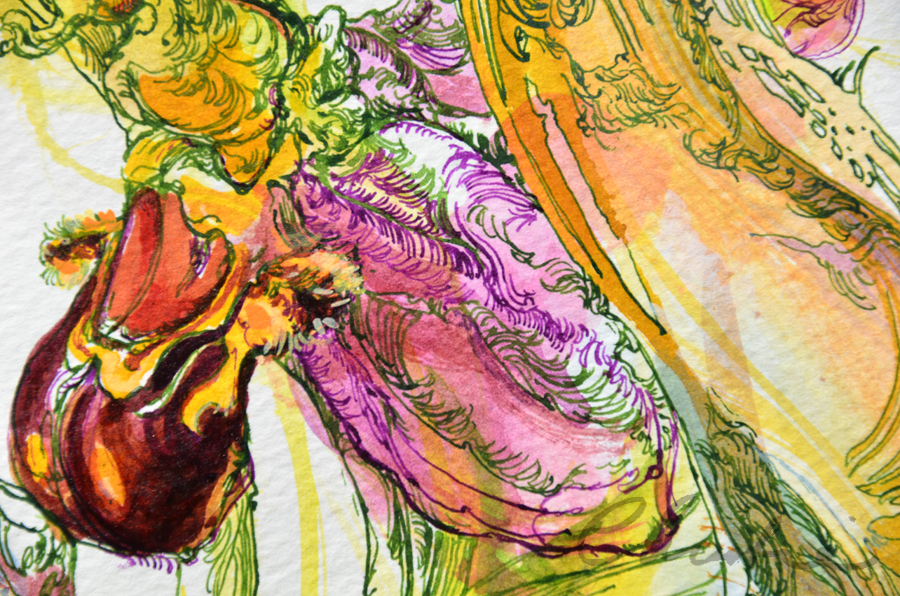
This is my second painting in a series I am working on. You can find the first one and a more thorough description of the theme by clicking here!
-Christie
June 1st, 2012 § § permalink
In Swan Lake, the evil Von Rothbart tricks Prince Siegfried into proclaiming his love for a black swan disguised as his true love, Odette. Such deception and powerful disguise seem otherworldly or from a folktale, but in truth these themes are real in the animal world. Ophrys apifera successfully reproduces through pseudocopulation, as the orchid resembles a female bee with such precision that the male is fooled into copulating with the orchid, which then enables the flower to pollinate. It is a scientific name for that dark magic, tricking little prince bees into professing their love to the wrong girl (or species!).

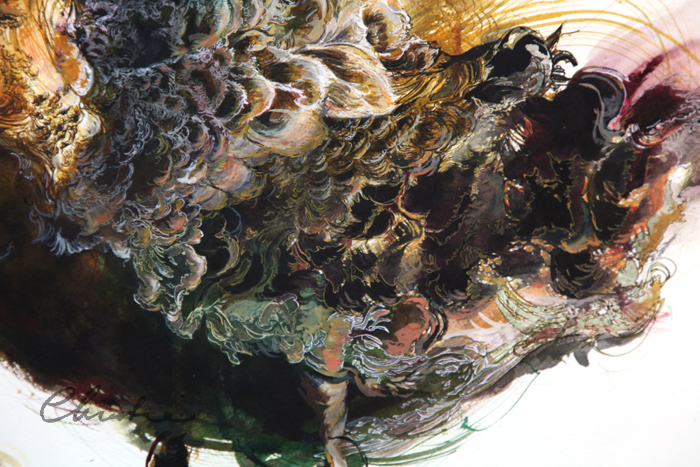
The bluebird is another victim of the dark side of evolution. The cowbird lays its egg in a bluebird’s nest and because the cowbird’s egg resembles the bluebird’s, the bluebird mother nurtures this parasite has her own. When the chicks are hatched, the cowbird enthusiastically begs for food and grows rapidly (what’s also very interesting is that cowbirds don’t imprint). The bluebird mother is deceived and burdened while the cowbird goes off and lays 50 or more eggs.
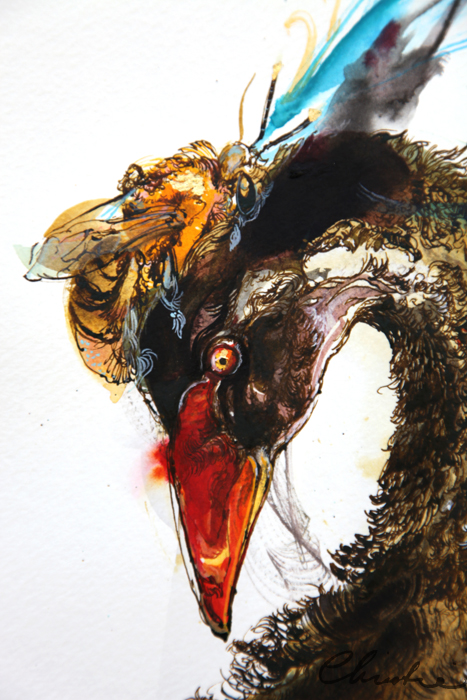
-Christie
March 27th, 2012 § § permalink
The markhor is the national animal of Pakistan and was once believed to have the ability to kill and eat snakes.
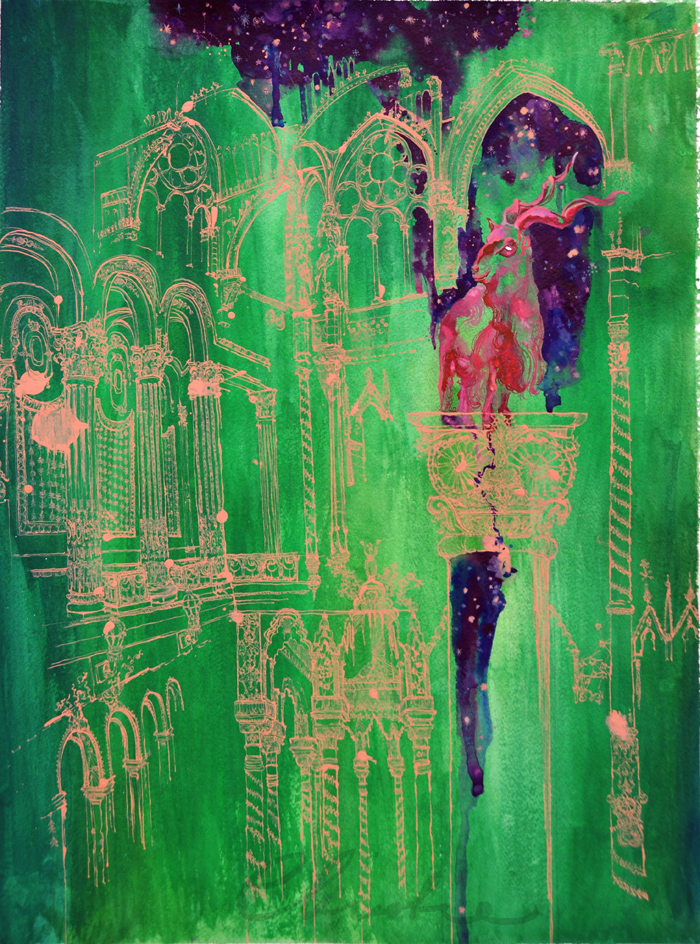

Because of the colours I used, in person you have to shift your eyes a bit to see the line work
They are also esteemed for their horns, which are believed to hold medicinal properties and are an attractive hunting target, prized for the challenge that accompanies stalking them in high mountainous terrains.
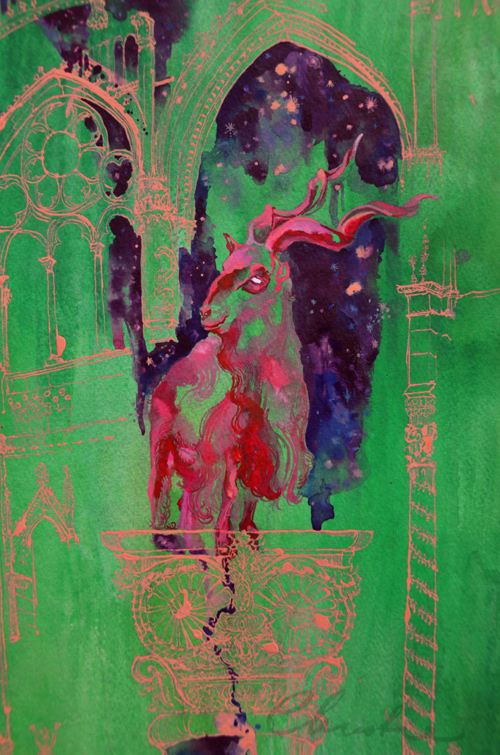
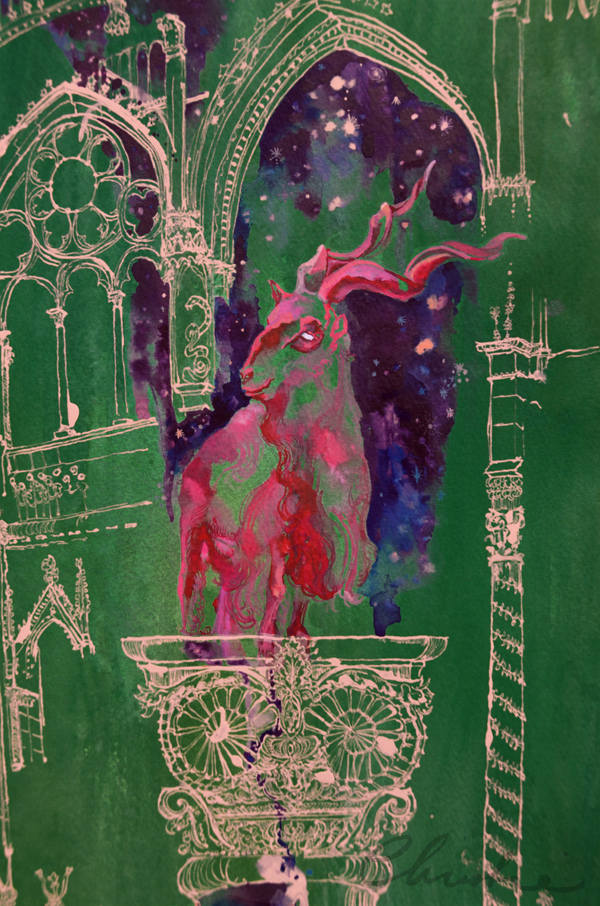
As Pygmalion carved his ivory statue on a pedastal, Markhors hold a prestigous place in their country. Unlike the realm of a greek myth, however, no manner of wishing or later sacrifices will restore life to the markhor if it becomes extinct. There are fewer than 2500 left.

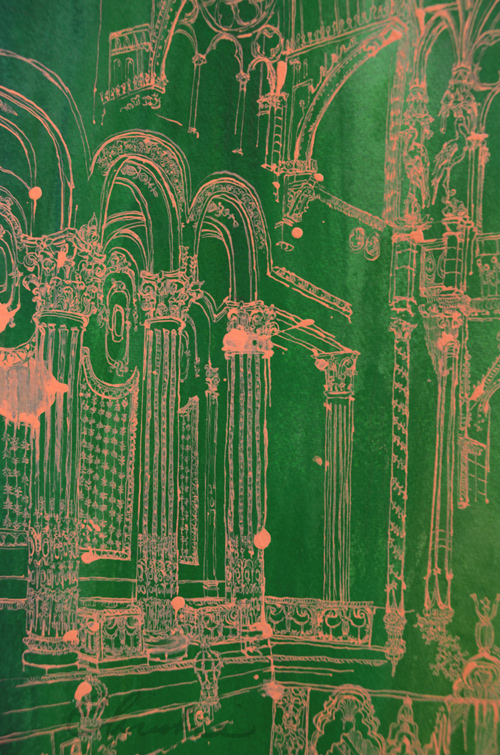
-Christie
March 8th, 2012 § § permalink
The irish elk, now extinct, had the largest antlers ever.
Sexual selection maintained its size and position on its head, which made them appear to their full advantage from all angles, but were of poor use for combat. Such large antlers required an abudant supply of calcium and phosphate and presented difficulties while moving through forests. Their crowns were fantastically impressive and matched in expense.
Sexual selection drives males to spend more of their resources on growing or maintaining these extravagant physical assets. In the same way, we value elaborate decorations that proclaim this wealth, such as jewels, crowns and gold embroidery. Beauty is ridiculous and what we find attractive can be irrational, but it is in our nature to appreciate and be obsessed with it nonetheless. It persuades us to use extensive funds and labour to produce it, but it remains much more pleasurable looking at it than being or supplying it. Our adoration of beauty is imperfect but it is the motor of human and animal lives.
-Christie
February 27th, 2012 § § permalink
Tralalala

Beautiful day to float around red coral! I think it’s pretty neat that red is the first colour to disappear under water, but red coral is only found at deep depths. Red coral has been used as decoration for centuries, which makes me think of them as invisible sunken treasure. One of the things I find fascinating about marine life is its many illusions, especially disappearing (like vanishing squids in a cloud of black ink and the blue ringed octopus that suddenly appears to poison its victim).
Unfortunately, my documentation didn’t capture the silver highlights I did for the argonaut and jellyfish, but I guess that’s another optical illusion!
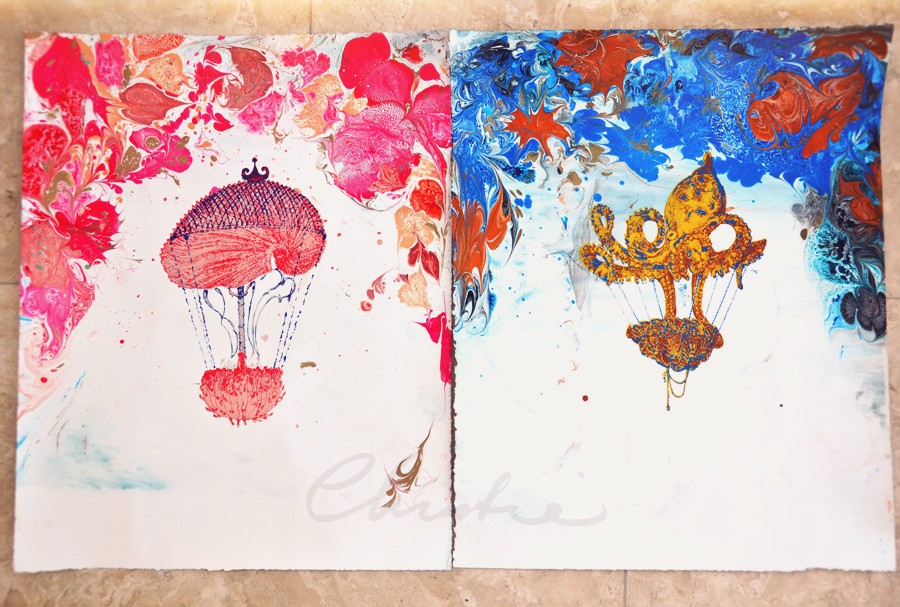
These two took forever to get done the way I wanted. Lots of experimenting and ruining things at home, but I love them!
-Christie
February 25th, 2012 § § permalink
The phoenix is a symbol of immortality in its renewal and is suitably made of fire, as flames destroy but also cleanse. A phoenix identifies a true king with its passing shadow, so too can a fire reveal an element by enduring a flame test.
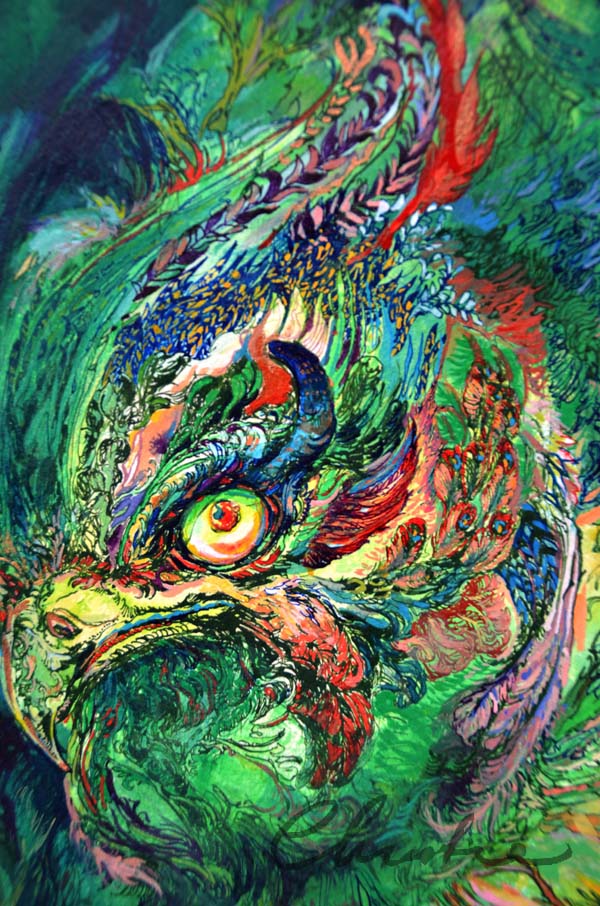
Boron, one of the solar system’s rarest elements, for example, turns a brilliant green. Phoenixes are an ancient myth, but by designing a phoenix made of a real element, it can be a metaphor for its traces and history with human use. Boron has been known to humans since AD300, first used as a glaze for ceramics. Since its first uses, boron has reinvented itself in various applications, such as glass, tank armour, bullet proof vests, shielding in nuclear reactors, MRI devices, participation in the compound that makes our strongest magnet and outer spacecrafts. It has low toxicity to humans but is essential for all life as it strengthens cell walls in plants.
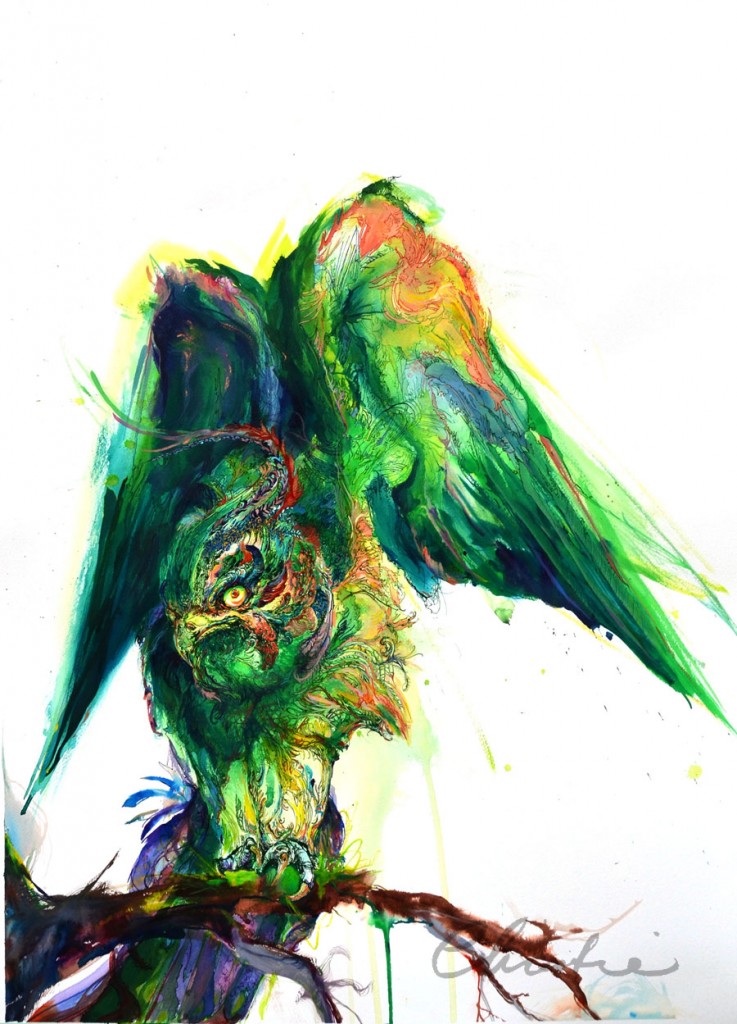
Like boron, we have an idea of a phoenix’s properties and beginning, but they both exist in our daily lives in small, mysterious marks.
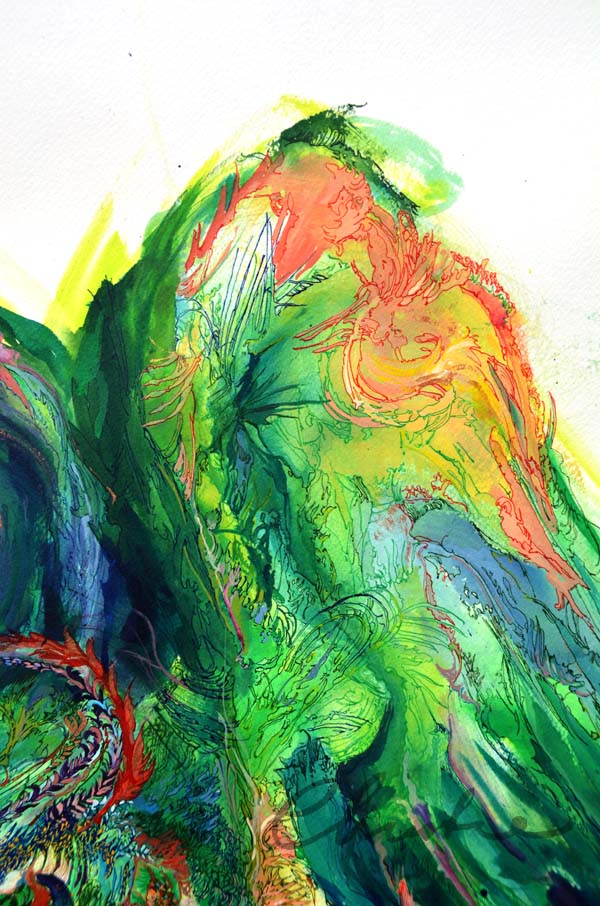
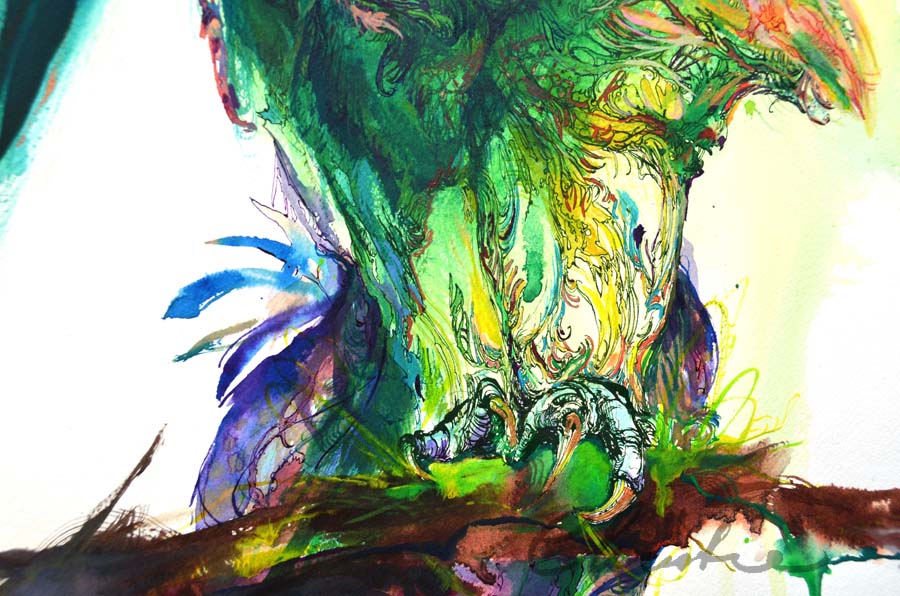
-Christie
February 22nd, 2012 § § permalink
Just finished printing this guy last night!
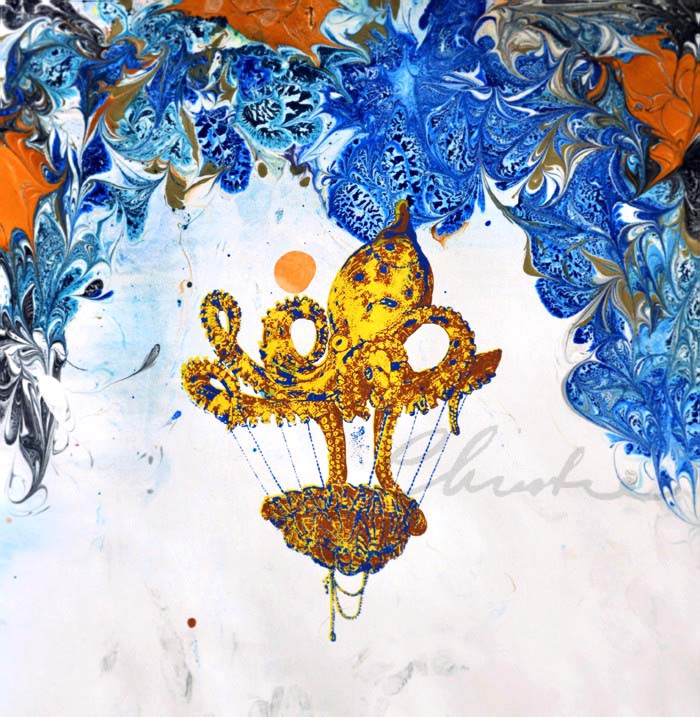
At last, he finally looks like a blue ringed octopus in a crazy ocean.
-Christie




















